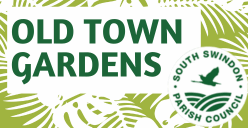Soldiers restore Dakota aircraft in honour of colleagues who died at the Battle of Arnhem
This week marks the 75th anniversary of the Battle of Arnhem and soldiers from today’s 47 Air Despatch Squadron have honoured their fallen comrades by restoring the battered Dakota aircraft which has languished in recent years at RAF Brize Norton.
The Dakota now stands proudly outside the Squadron’s HQ, painted in the authentic and distinctive colours for which it was known during the Second World War. Its white and black markings – known as invasion stripes – identified them as friendly aircraft to troops on the ground.
A workhorse of then 49 Group during the war, the Dakota was used routinely to fly in and out of battle zones dropping supplies to forces on the ground. Wiltshire has played a huge and often forgotten role in the history of the despatch soldiers over the years.
The Dakota often flew from Down Ampney and Broadwell in the Cotswolds. More recently we have known the same role being carried out by the Hercules aircraft which took part in many, many operations, including repatriation, from RAF Lyneham.
It’s easy to forget the role played in the Battle of Arnhem in Holland and many other operations since by the soldiers of today’s 47 Air Despatch Squadron – the only squadron of the British Army which works daily alongside the Royal Air Force. They prepare, load and despatch everything from 20kg kit bags to eight-tonne boats from aircraft to forces on the ground.
One of the most significant moments in the Dakota’s history and that of the despatch veterans will be remembered over the next week. The Battle of Arnhem was a major offensive of World War II fought around Arnhem, Oosterbeek, Wolfheze and Driel in Holland in September 1944.
The aim of the battle was part of a bigger plan, Operation Market Garden, to open the way to the Ruhr for the Allied Forces, allowing them direct access into Germany and thus, hopefully, ending the war more quickly.
Involving airborne divisions, one of the keys to success was to secure the bridge at Arnhem allowing forces to cross the Rhine. Supplying the troops was essential to this operation and one of the heroes of this battle was pilot David Lord VC, originally from Cork in Ireland.
Taking off from Down Ampney, near Swindon he and his crew of six flew out to drop vital supplies in wicker panniers over the battle. The aircraft was hit and one wing caught fire.
As the plane burned and knowing the terrible risk he ran, Lord went in again to supply troops and drop out the remaining baskets flying at 900 ft. Eyewitnesses said the crew could be seen still dropping the panniers out as the plane burned.
Lord told his crew to bale out however the plane crashed suddenly leaving only one survivor, co-pilot Harold King, who was captured. It was only due to King’s testimony after the war that Lord and his crew’s bravery became known and he was awarded the highest battle honour posthumously.
During the battle, 81 air despatchers were killed in 96 hours and more than 100 were missing in action. While those forces did liberate many Dutch towns their key objective to take the bridge at Arnhem failed as the German resistance was strong, soldiers ended up surrounded and were captured.
In all more than 1,400 British and Polish troops were killed and thousands more were taken as prisoners of war.
Lord’s Dakota was destroyed in the crash however the Air Despatch Association purchased one in 2003 which had also taken part in World War Two. It has stood and slowly started disintegrating in front of the HQ and hangars used by today’s despatch soldiers.
As the 75th anniversary came closer, members of 47 Air Despatch Squadron decided to do something about it. The Squadron is a family of around 127 soldiers who support British armed forces all over the world.
With financial support from the Imperial War Museum and the Battle of Britain Memorial Flight and acting on advice from experts at RAF Duxford, the soldiers have restored the aircraft to its authentic World War Two look.
Central to this has been Captain Steve Francis, 44, who is second in command of the Squadron. He said:
“We wanted to honour the vital work done by this British squadron today and in the past and particularly during the Second World War. The aircraft had started to look very shabby. A bad storm had also dislodged a rudder and the paintwork was crumbling.
“We wanted the Dakota to be a fitting memorial to our colleagues and a point of pride on the base. We are days away from finishing it and I’d like to thank everyone who has been involved. A special mention to civilian engineer Martin Easey who helped us re-fit and re-spray the elevators and the rudder.”
Members of the Squadron will be heading to Holland over the next week to take in commemorations for those who fell during the Battle of Arnhem and Operation Market Garden.





















